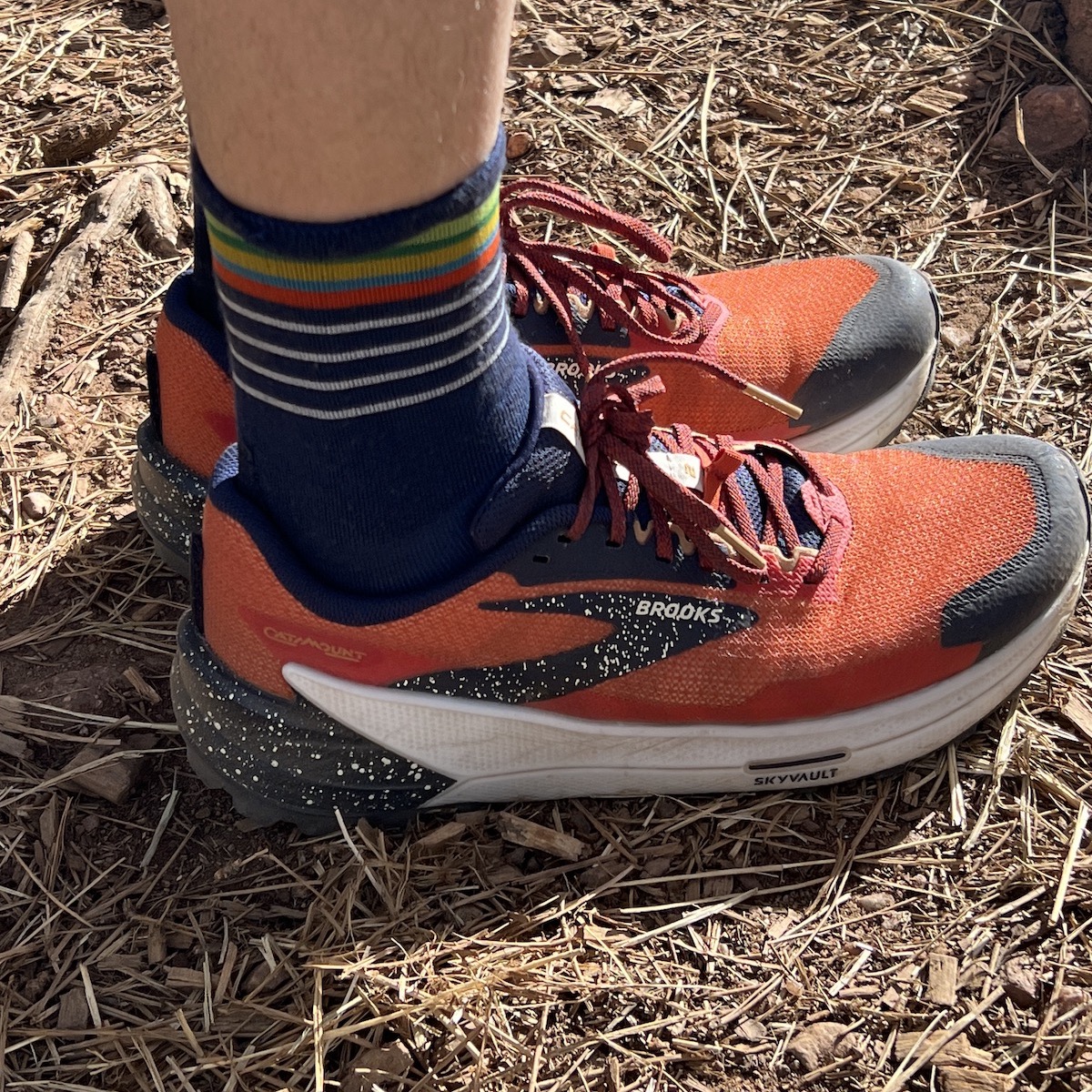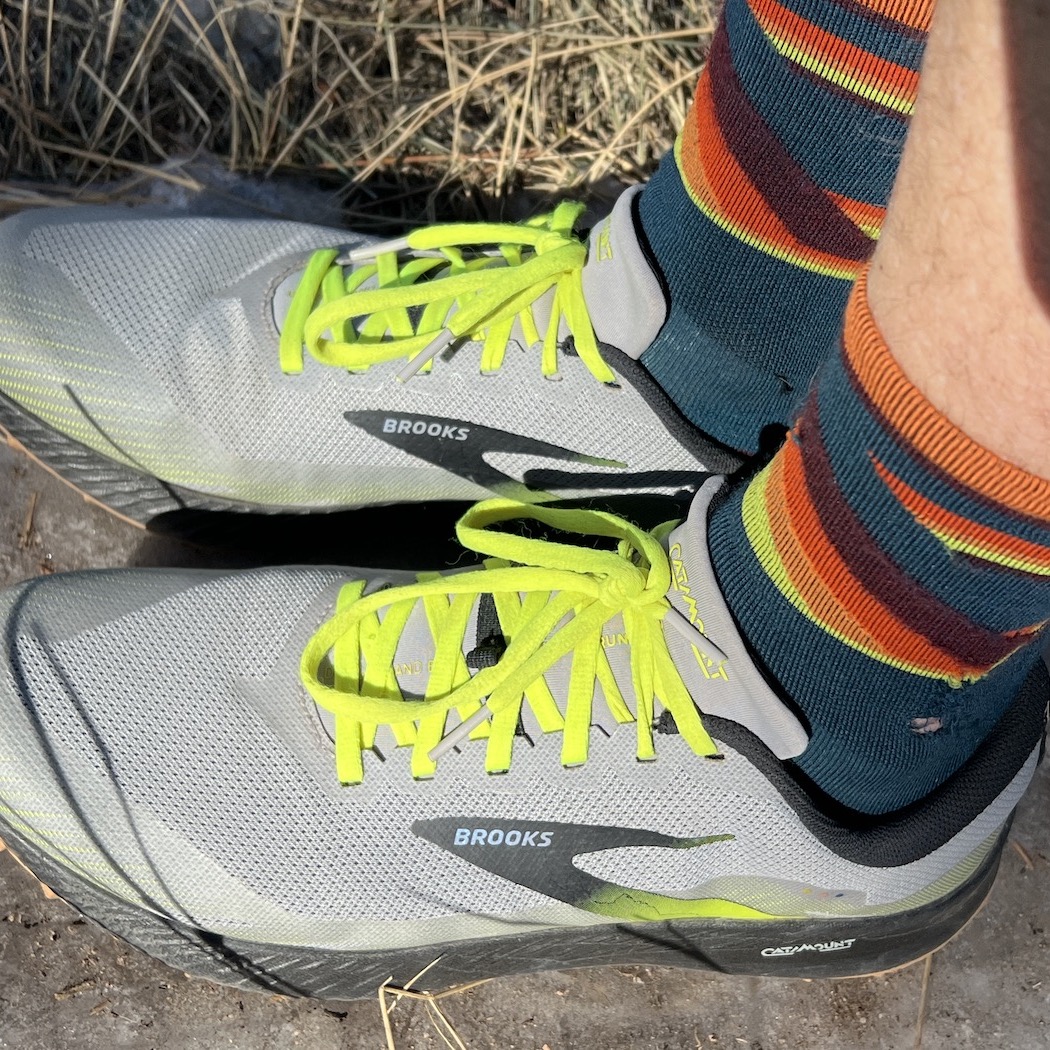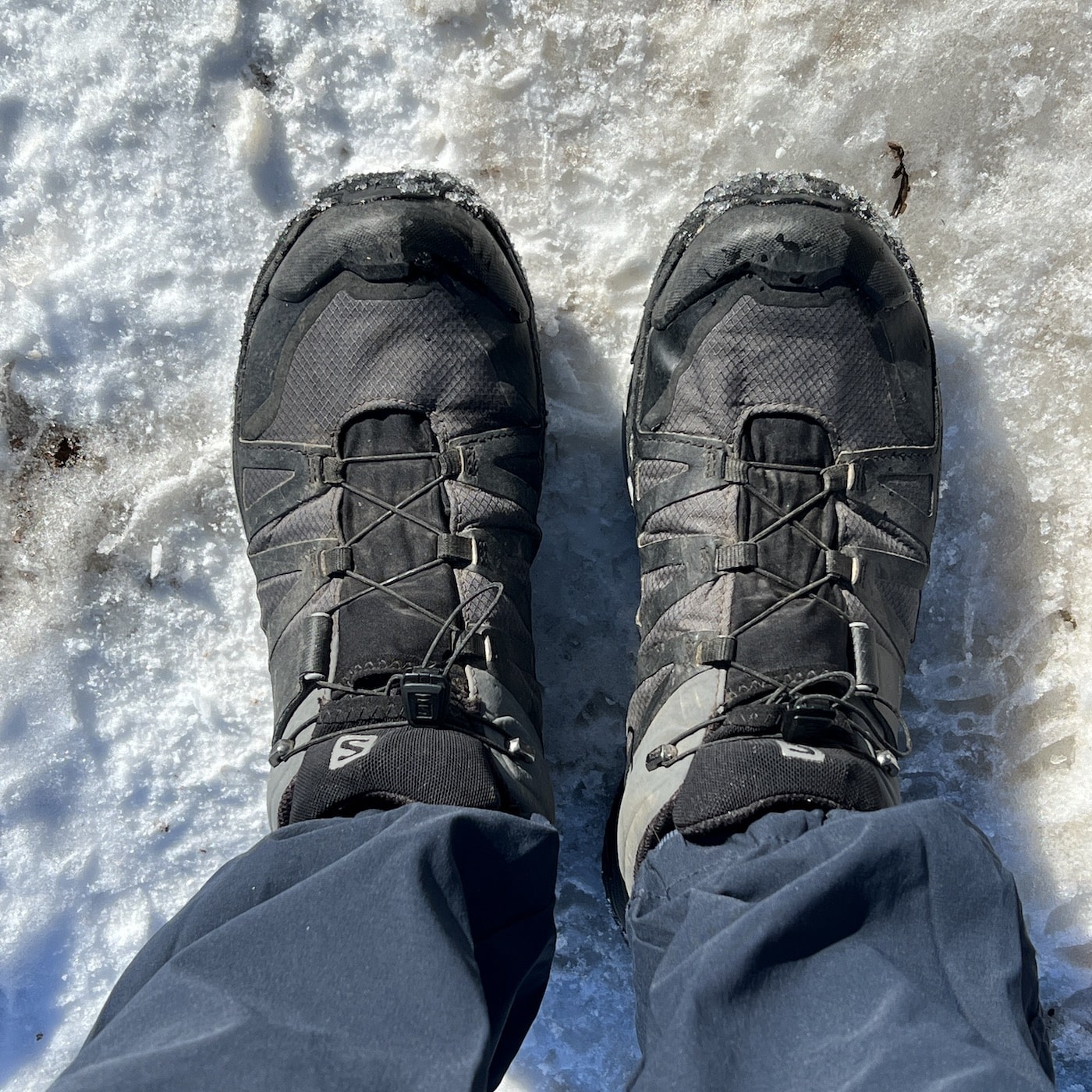When the child carrier is outgrown, and sometimes before, it’s time for some kid’s hiking shoes. Hiking shoes, hiking boots, or trail runners are essential kids’ hiking gear but which one is the best choice?
Hiking boots are the most common but there are many reasons to buy hiking shoes instead, especially because they weigh less and are more comfortable. Trail runners are lightweight and comfortable but don’t last as long are less likely to be waterproof.
The main things to look for in hiking footwear are fit, weight, and flexibility. Additional considerations are durability and the closure, whether the shoe can be put on by a child.
All the shoes mentioned here are made by trusted outdoor brands. They cost more but are also more reliable. There are plenty of Amazon options for a lower price but the quality varies so much that we can’t recommend them. Deals on brand names are always available through sales, REI Outlet, and Rakuten cash back.
Hiking Boots vs Hiking Shoes vs Trail Runners For Kids
First off, what is the difference between hiking footwear?
Hiking Boots
Hiking boots are designed for rugged terrain and long distances. They are durable, supportive, and protective. This all adds weight, making each step take more effort and energy.
Many hiking boots have stiff, thick soles. This isn’t an issue for larger feet and heavier bodies but in small sizes and light weights, stiff soles may not bend at all. This limits agility especially for those off the beaten track adventures.
Hiking Shoes
While hiking boots are high top and hiking shoes are low top, hiking shoes are not just low cut versions of hiking boots. Hiking shoes split the difference between heavier, tougher hiking boots and lighter trail runners.
For long hikes, tough terrain, and backpacking trips, hiking boots may be necessary. For day hikes and younger kids, hiking shoes are the better choice. They are lightweight and comfortable, hopefully ensuring a complaint-free hike.
Trail Runners
Trail running shoes are gaining popularity for hikers of all ages and there are more options available for kids than ever before. These are athletic shoes with a stiffer sole for more traction. They offer the comfort of sneakers with features designed for the trails.
How To Pick Kid’s Hiking Shoes
Here are some more reasons to choose hiking shoes as well as what to look for in a shoe.
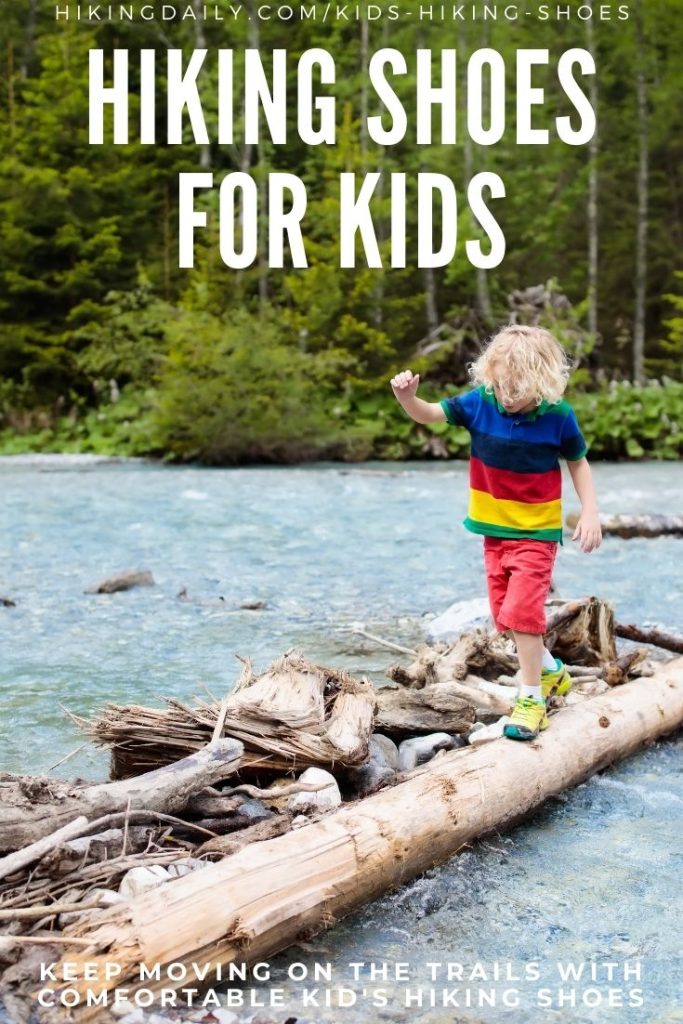
1. Weight
The saying goes that a pound on your feet equals five on your back. With kids, that energy needs to be spent moving forward, not dragging feet. Low cut hiking shoes with breathable fabric minimize weight while providing a trail-ready sole.
The weights listed for the shoes below are what was given by the manufacturer but may not be exact. The weight will vary by shoe size.
Lightweight Hiking Shoe For Kids
Columbia Redmond Kid’s Hiking Shoe
Combines leather and mesh for a lightweight and water-resistant shoe. The thick insole provides cushioning and high energy return while the rubber outsole provides traction and grip. The elastic laces with push-button are easy for kids to put on and take off.
- Weight 11 ounces
- Waterproof Water resistant
2. Flexibility
Hiking shoes have stiffer soles than athletic shoes that are good for rocky terrain and when carrying weight. While rigidity in the soles adds stability, they can be too rigid and make walking more challenging.
When kids first start wearing shoes, the most important feature is flexible soles that allow feet to move and bend. Soft-soled shoes won’t cut it on a hike but that flexibility is still an important feature to consider.
Test flexibility by pushing the toe and heel of the shoe together at the same time. There should be some degree of bend. This is most important for young kids who don’t weigh enough to bend a thick sole.
Another thing to look for is torsional rigidity, or how much the sole flexes side-to-side. This stable platform underfoot provides ankle support and stability, even more than high-top shoes. Test this by holding a shoe at the front and back and twisting it side-to-side in your hand. The harder it is to twist, the more stable it will be.
Kid’s Hiking Shoe With Flexible Sole
Keen Chandler CNX
A lower profile version of the classic Keen outsole, this shoe is lightweight, streamlined, and flexible, providing traction in every direction. Breathable mesh uppers dry quickly while the lacing system makes it for the littlest fingers to put on and take off shoes.
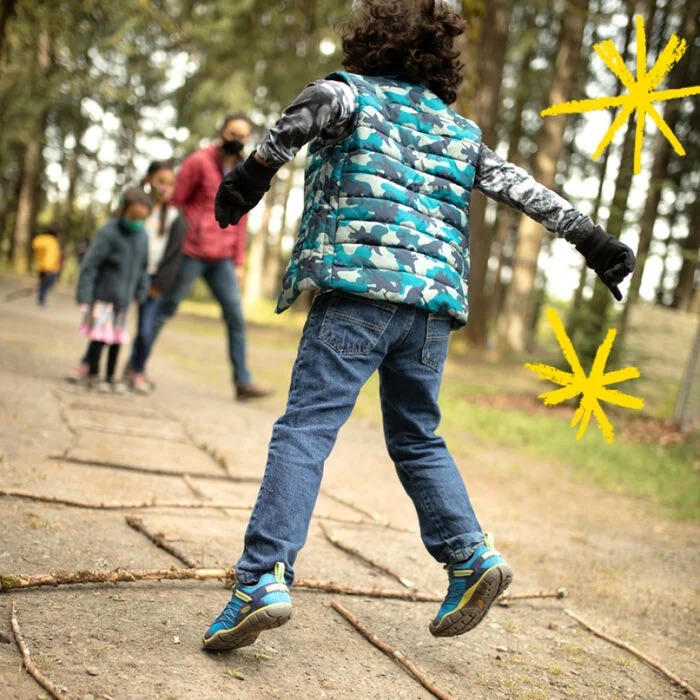
(Make sure to check Rakuten. At the time of writing, Keen is offering 5% back.)
3. Fit
Fit is really the most important factor of any shoe. With younger kids, it can be difficult to tell how shoes fit but a good test is putting a pinkie finger in between the shoe and heel. If it fits, the size should be fine now and for several months of growing. Anything bigger and the foot can slide around and cause blisters. Another way to check the fit of kids’ shoes is to remove the insole and have them step on it.
Buying specialty shoes at every shoe size adds up quickly so it can make sense to go up a half or full size, especially at the beginning of the hiking season. Make up the difference with a thicker hiking sock.
Comfortable + Waterproof Kid’s Hiking Shoes
Merrell Moab FST Low Waterproof Shoes
These shoes are comfortable right out of the box for most kids. The combination of leather and mesh makes the shoe lightweight, wick sweat, and waterproof. Heavy-duty soles provide plenty of grip on trails and are durable enough for everyday wear.
- Weight 9 ounces
- Waterproof Yes
For toddlers, check out the podiatrist-approved and machine-washable Merrell Trail Quest Jr. Shoes.
4. Durability
As mentioned above, hiking boots are built to last with hard rubber and leather uppers. Trail runners, with soft rubber and mesh uppers, wear out the fastest. Hiking shoes fall somewhere between the two.
Durability is something to keep in mind because these shoes can be pricy and some kids are very hard on shoes. For those rough and tumble kids, hiking shoes also work at the playground. You may even be able to hand the shoes down to the next kid.
I don’t say this with pride but my kid can wear out a pair of new athletic shoes in three months. Now he wears hiking shoes all the time and they last until he’s ready for the next size.
Long Lasting Hiking Shoes For Kids
adidas Outdoor Kids Terrex AX2
In addition to performance on the trails, these shoes hold up. Kids stay comfortable and secure on rocky terrain with EVA cushioning and a grippy traxion™ sole. They also stand up to daily wear and can even be machine washed. They are available in little and big kid sizes plus six cool color combinations.
- Weight 14 ounces
- Waterproof No
5. Closure
Hiking shoes can close with velcro, elastic, or laces. This isn’t the most important element of a shoe for me but for those independent spirits that insist on doing it themselves, low-top shoes are more likely to have a kid-friendly closure. Some shoelaces can be replaced with elastic.
Easy On-Easy Off Kid’s Hiking Shoes
North Face Juniors’ Hedgehog Hiker II Waterproof Shoe
They look like athletic shoes but they are so much more. They are waterproof with a lightweight, flexible, and grippy sole for comfort on and off the trails. The quick-lace cable can be adjusted with only one hand.
- Weight 9.4 ounce
- Waterproof Yes
6. Shoe Buying Tips
Getting A Deal
It gets expensive to buy all the different types of shoes for kids. Shopping the sales or at the end of the season brings the price down. Used shoes can be available at a local kid’s store or online. Beware though that the reason a shoe didn’t get much use could be that it’s not comfortable. However, you end up buying a shoe, trying it on is a must.
Boys and Girls Shoe Sizes
At this age, shoe sizes are the same for boys and girls. The difference between big and little kid sizes can cause confusion. Baby shoes start at size 1 and go up to 13.5, which may happen between 5 and 7 years. Then the sizing resets back to 1 and continues up to men’s sizes.
Just be sure you’re buying the correct size. The little kid sizes are often marked with a T for toddler.
7. Hiking Socks
As mentioned above, hiking socks can help a larger shoe fit. Even for just the right size shoe, hiking socks are always recommended because they are thick to cushion the foot, tight to prevent bunching, and designed for comfort.
Some type of wool blend is ideal because they wick away sweat in the summer and keep feet warm in colder weather. Some type of polyester blend can work as long as they don’t bunch up. As always, avoid cotton.
I often bring a second pair of socks along just in case. Fresh socks seem to have a placebo effect when hiking gets tough for my kid.
Again, hiking socks are pricy but frequently go on sale. Or make a good stocking stuffer.
